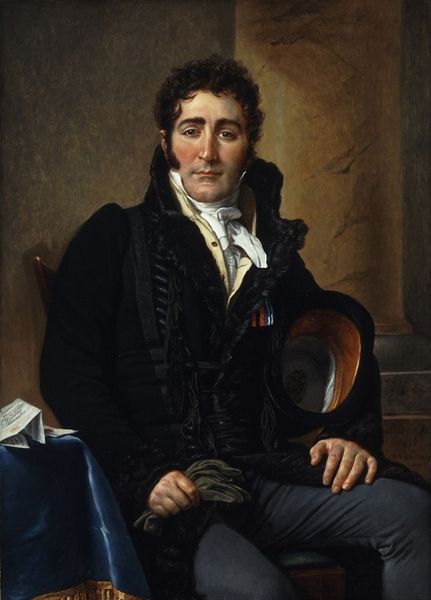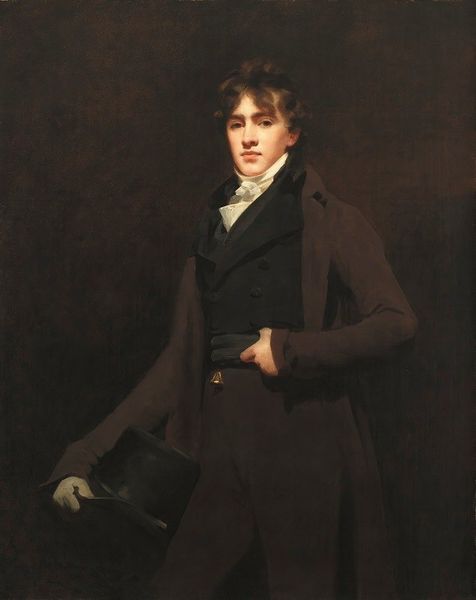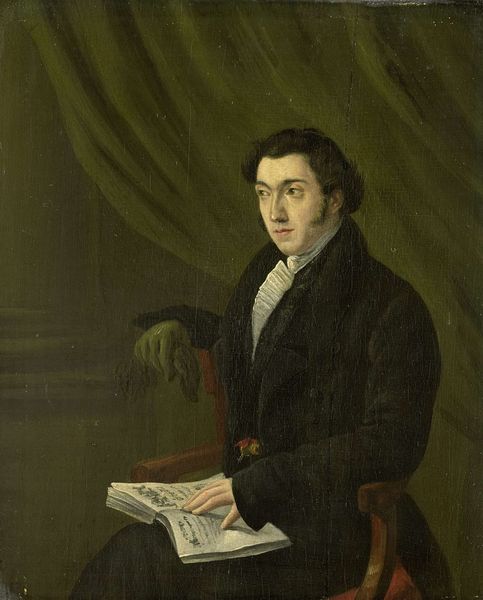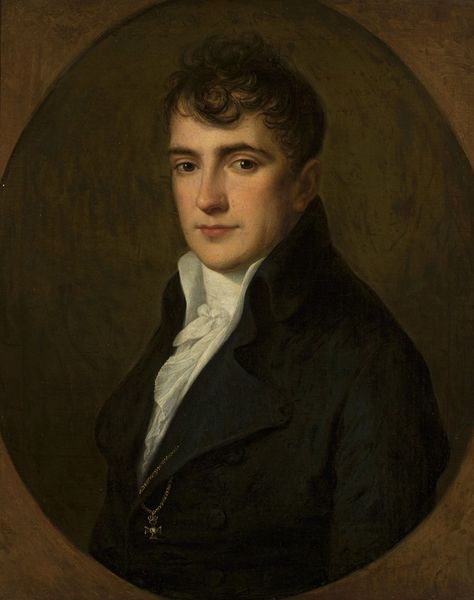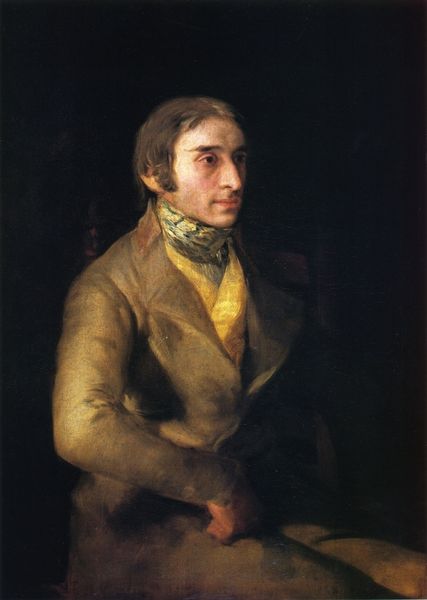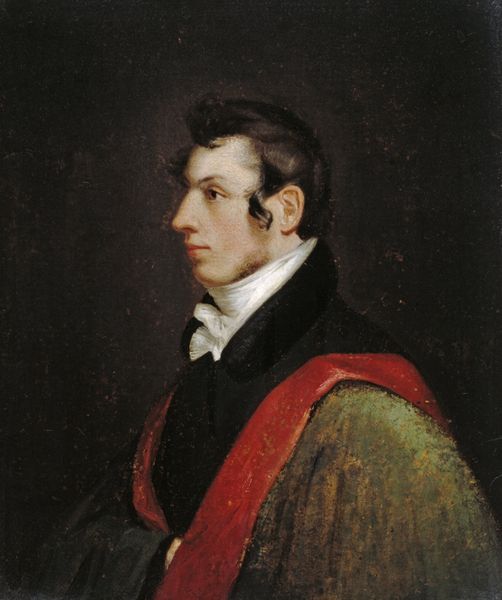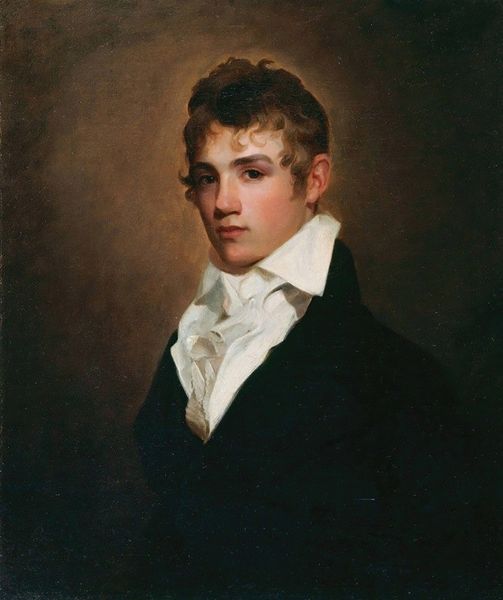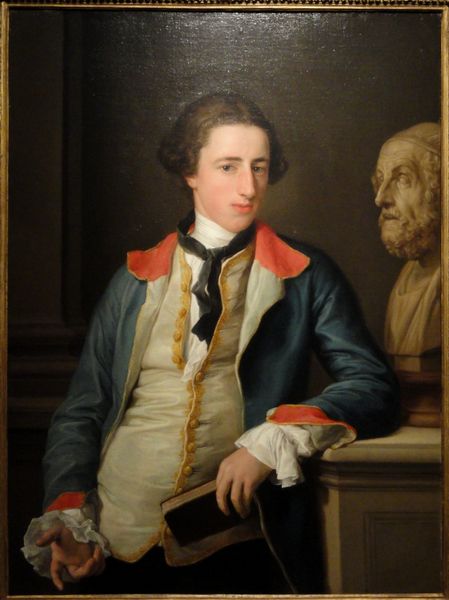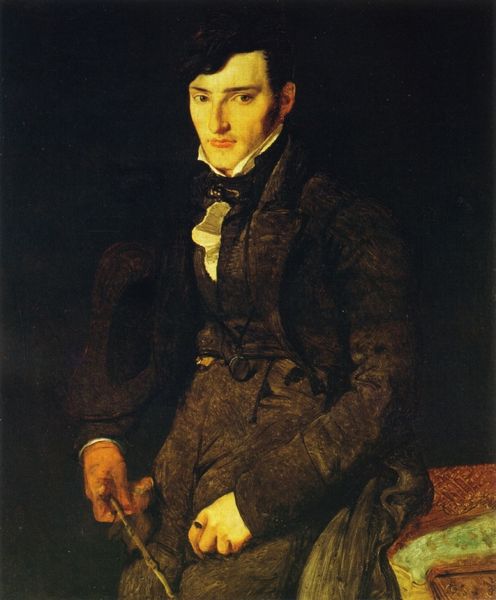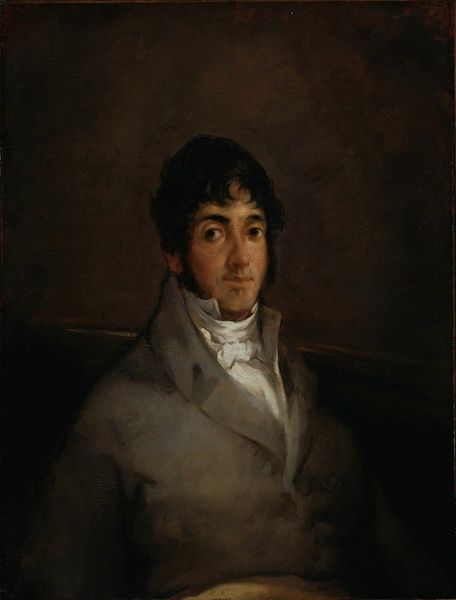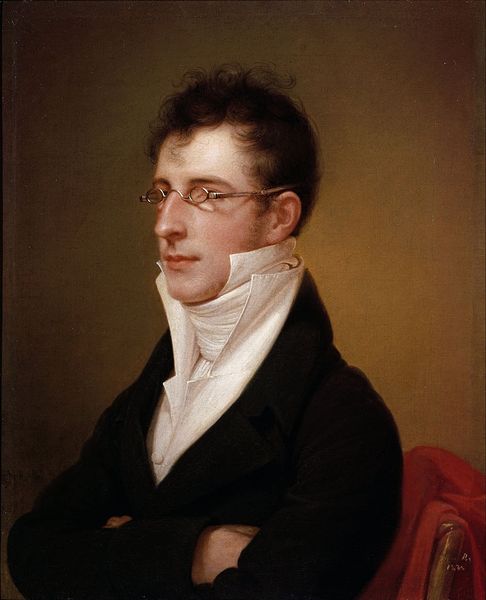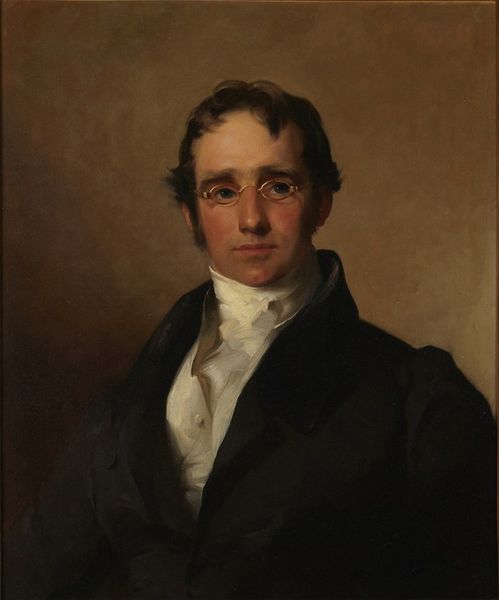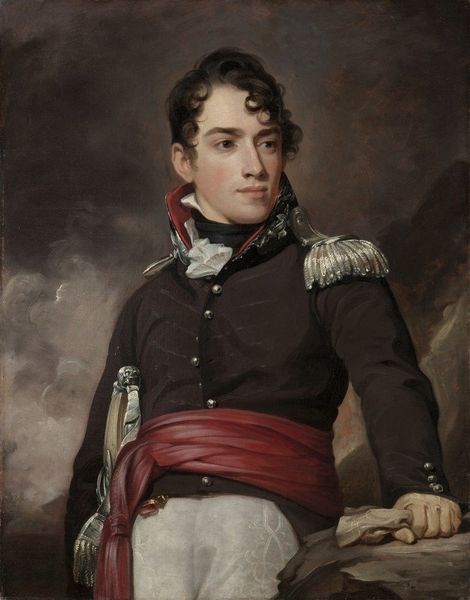
painting, oil-paint
#
portrait
#
figurative
#
painting
#
oil-paint
#
figuration
#
romanticism
#
academic-art
Copyright: Public Domain: Artvee
Curator: Immediately, I am struck by the stillness and the air of contained energy; he is present but somewhere else in his mind. Editor: Indeed, a captivating portrait. What we're observing is Friedrich von Amerling's oil painting from 1831, titled "The Painter Robert Theer". It encapsulates Romanticism’s ideals. Curator: Romantic, certainly. He looks every bit the brooding, creative type. Notice the precision of the draftsmanship – the layering and the rendering of those dark surfaces suggests much effort was applied. It’s like viewing a monument to artistry and creative ambition, reflecting perhaps the subject’s position within the 19th century artistic milieu. Editor: Absolutely. Romanticism was deeply intertwined with rising nationalism and notions of individual genius, we see those expressed here. Also consider the performative aspects of "painterliness", the emphasis on individual gesture in academic circles was very material. Robert Theer is presented almost heroically. His expression hints at the internal struggles common amongst intellectuals during the post-Napoleonic era. Curator: I see the layers of context you are suggesting. However, consider also the historical reading that frames it more personally - Theer’s upward gaze and folded arms, aren’t these the very poses and forms that project both power, and an aspiration that can never be satisfied in an ever growing industrialized environment? I read this as part of Theer’s resistance as a worker. Editor: Perhaps a more straightforward reading, given our man's profession, might also highlight the social position artists had to occupy during this time, as members of trade who struggled against elitism. His confident pose signals artistic independence that resists social prejudice in art-making communities. Curator: Right, so, despite our differing vantage points, both recognize the image's historical placement, and consider the tensions between individuality, creative ambition, social standing, and craft embedded in Romantic-era artistic production. Editor: And, in acknowledging this, we enrich our reading beyond aesthetics by investigating materiality and context for clues to lived experience.
Comments
No comments
Be the first to comment and join the conversation on the ultimate creative platform.
